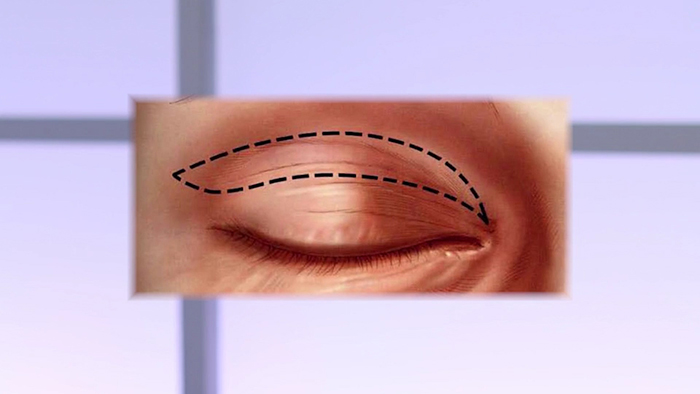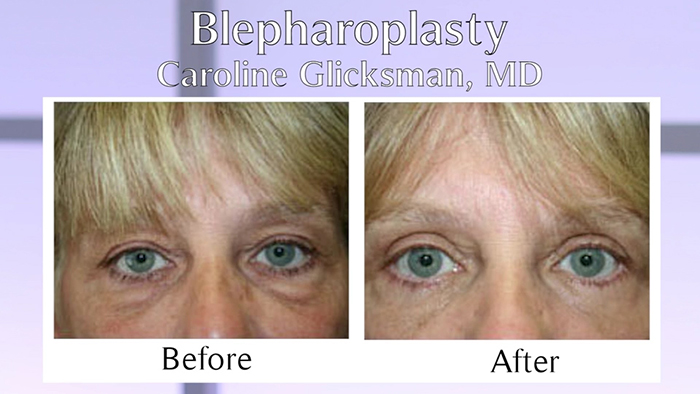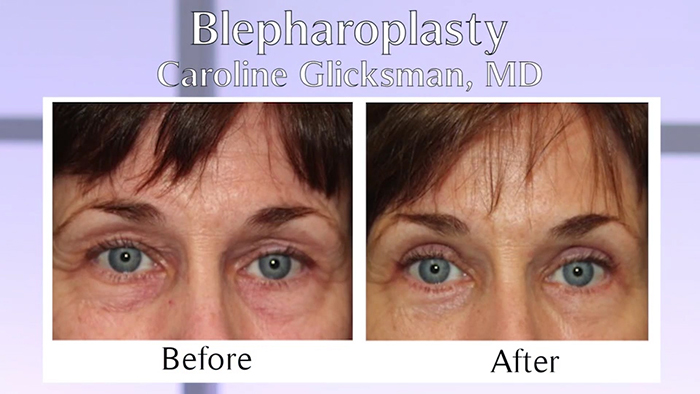The eyes are the focal point of expression and the first thing people notice when they meet someone. Are your eyes aging you? If so, you are not alone.
The eyes are often the first area of the face to show signs of aging. In fact, according to statistics from the American Society of Aesthetic Plastic Surgery, eye rejuvenation is perennially in the top 5 procedures that patients seek when considering improving their appearance.
According to Dr. Caroline Glicksman, a board certified plastic surgeon in New Jersey, facial cosmetic procedures in particular demand a thorough consultation. “The aging eye can be addressed both noninvasively and with surgery. Explaining the benefits of each treatment and determining the candidates for a specific approach ensures my patients realize the best result possible.”
Noninvasive Eye Rejuvenation
Noninvasive treatments are a common “first line of defense.” As one ages, the characteristics of the eyes change in predictable ways: the skin thins and becomes less elastic, brows may descend, the upper lid may recede or enlarge, and the bones around the eyes appear more prominent. Injectable treatments – both neurotoxins, such as Botox and hyaluronic acids known as dermal fillers, like JuvedermXC and Juvederm VolumaXC may improve the signs of aging around the eyes. Botox is used for a wide variety of concerns including softening lines in the forehead, subtle lifting of the brow, correcting crow’s feet and decreasing the wrinkles between the eyebrows.
“The careful placement of Botox is important in older patients,” says Glicksman. Botox can produce a lifting of the brows when placed between the eyes and on the sides, but when placed directly above the brow, it may cause many older patients to feel too “heavy.”
The midface and crows feet area can be gently improved with non-surgical procedure as well. Juvederm VolumaXC can produce a beautiful mid-face lift, and lessen the appearance of tear troughs and lower lid bags
Dr. Glicksman cautions that the use of Botox and fillers is very technique dependent. “The skill and experience required is often underestimated.” Those who are not trained properly or have less experience in administering injectables will not be able to maximize all the benefits that could be yours in more capable hands. There is also a higher risk of complications if you trust the wrong injector.
Botox to Bleph – Graduation Day
Unfortunately, injectables are not a “forever” solution. In fact, insisting upon noninvasive modalities past the point of diminishing returns can have a detrimental effect on your appearance. Dr. Glicksman reminds that noninvasive treatments are appropriate in preserving a youthful look but in no way substitute when surgery is truly indicated.
“I think one of the most important reasons for a prospective patient to visit a board certified plastic surgeon is to get an honest diagnosis,” explains Glicksman. “There comes a point when Botox and fillers are just not going to do it anymore. Botox might get rid of lines on the forehead, and give the brows a bit of lift, but excess skin and fat cannot be treated with fillers.”
For patients who have used Botox and fillers for years, but are now beginning to notice the skin on their upper eyelid overhangs or droops and/or there is puffiness or “pillows” under the lower lid, eyelid surgery might be the best option. “A blepharoplasty, or eyelid lift, gets rid of skin and fat in the upper and lower eyelid,” says Glicksman.
Blepharoplasty is one of the most satisfying aesthetic enhancements for both men and women because it can literally open up and refresh their entire expression.
What to Expect with a Blepharoplasty
Glicksman performs eyelid lifts in an outpatient surgery center. Patients are given anesthesia and carefully marked. Dr. Glicksman uses a fine suturing technique around the eyes. “The excess skin is removed and the incision is well hidden in the crease. I never want my patients to see a telltale line near their lashes.”
The surgery is relatively short–usually under 2 hours. Her delicate approach and careful administration of anesthesia minimizes bruising and post-operative nausea. There is generally little post-op discomfort. Drops are given for dry eyes and sutures are removed the third and sixth days. “My patients are often out of the house in sunglasses at the 7 day mark,” says Dr. Glicksman.
A More Permanent Solution
Blepharoplasty is one of Dr. Glicksman’s favorite procedures. “Eyelid lifts are an easy procedure to undergo and one of the longest lasting.” Certainly more permanent than injectables. “The reality is that we are just renting injectables for the short term.”
This simply yet dramatic procedure often helps patients gain confidence for future aesthetic procedures. “That little bit of surgical tightening around the eyes makes a huge difference in a person’s appearance,” says Glicksman. “A positive experience with an eyelid lift makes some patients more comfortable eventually exploring more intricate interventions such as facelifts and necklifts.”



















Facebook
Twitter
Instagram
YouTube
RSS